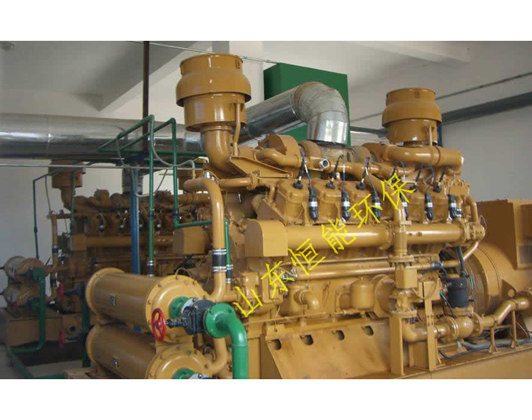在減排政策的貫徹落實過程中,許多企業打算利用污水處理站的沼氣來替代天然氣進行鍋爐燃燒或發電。因此,在沼氣利用生物脫硫工藝,成為電廠和站長選擇的難點。目前,較常用的脫硫工藝有干法、濕法和生物脫硫,本文將對這三種方法進行簡單的說明和對比。
In the process of carrying out energy-saving and emission-reducing policies, many enterprises intend to use biogas from sewage treatment stations to replace natural gas for boiler combustion or power generation. Therefore, it is difficult for power plant and station master to choose bio-desulfurization process in biogas utilization. At present, the more commonly used processes are dry, wet and biological desulfurization, this paper will be a simple description and comparison of the three methods.

一、常用脫硫技術
1.干法脫硫
從脫硫塔的一端,經過填充層(主要成分為活性炭和氧化鐵)凈化后,從另一端流出。填料層中的氧化鐵與硫化氫反應生成硫化鐵,并在氧化鐵反應結束后可再生。
脫硫原理:
Fe2O3·H2O+3H2S=Fe2S3+4H2O
更新原則:
Fe2S3+3/2O2+3H2O=Fe2O3·H2O+2H2O+3 S
1. Dry desulfurization from one end of the desulfurization tower, after the filling layer (mainly composed of activated carbon and iron oxide) purification, from the other end of the flow. The iron oxide in the filler layer reacts with hydrogen sulfide to form iron sulfide, which can be regenerated after the iron oxide reaction. Desulfurization principle: Fe2O3·H2O 3H2S=Fe2S3 4H2O Update principle: Fe2S3 3/2O2 3H2O=Fe2O3·H2O 2H2O 3 S
2.濕法脫硫
濕法脫硫是將沼氣送入洗滌塔,經過堿液清洗和吸收,進入富液槽、再生槽,采用化學藥劑方法催化氧化,終將硫化物轉化成單質硫(硫泡沫),再利用吸收液進行循環利用。
2. Wet desulfuration wet desulfuration is to send the biogas into the scrubber, after washing and absorbing with Alkali solution, into the rich liquid tank and regeneration tank, and finally convert the sulfide into elemental sulfur (sulfur foam) by catalyzing oxidation with chemical reagent method, reuse the absorbent for recycling.
3.生物脫硫
生物脫硫也是濕法脫硫的一種,與上述濕法脫硫的催化氧化法相比,大的不同在于采用硫桿菌代替化學催化劑,將硫化物直接氧化成硫單質。
3. Biological desulfurization biological desulfurization is also a kind of wet desulfurization, compared with the above-mentioned catalytic oxidation method, the biggest difference lies in the use of thiobacillus instead of chemical catalyst, the sulfide is directly oxidized into sulfur simple substance.
